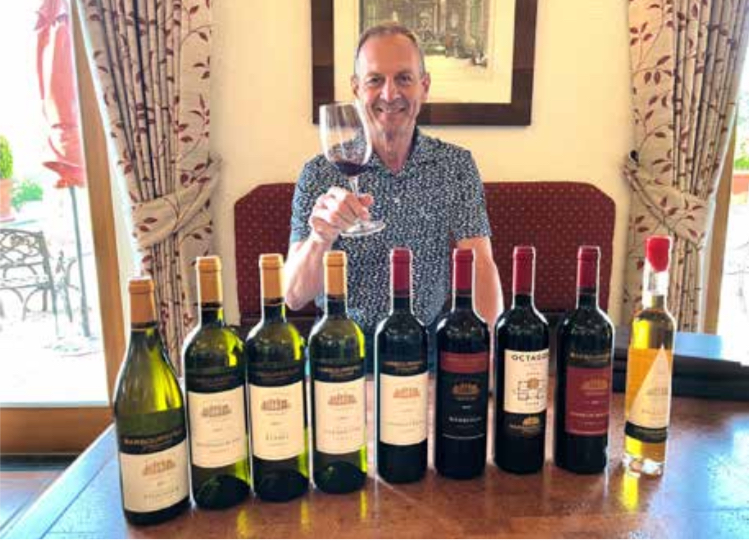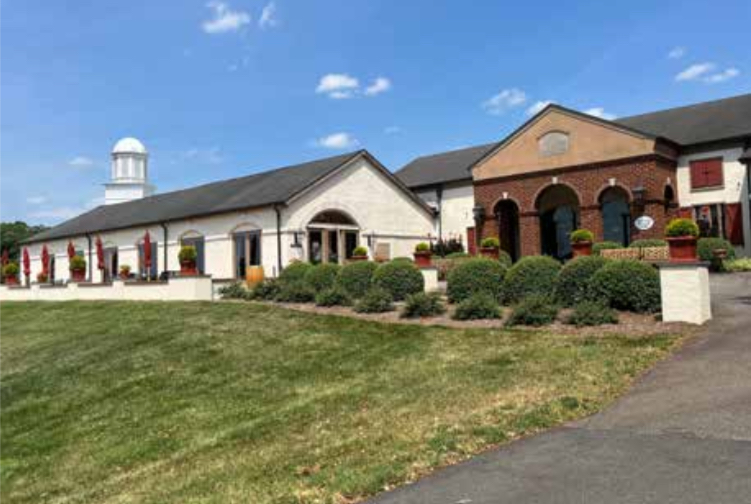TRUE PASSION FOR THE TERROIR AND DEVOLUTION TO THE PLANT

Barboursville Vineyard was created in 1976 and extends on 364 hectares of which 180 are planted with vines. It’s located in the Southwest Mountains (Virginia Piedmont).
It had been almost 10 years since I had been back to the splendid Barboursville winery. It was therefore a great pleasure to meet Luca Paschina again so that he could share with me his philosophy, his ambitions and his love for this fabulous terroir (red clay and volcanic rock) of Virginia. Let’s meet Luca Paschina, the winemaker of this iconic winery.
VertdeVin: What are the characteristics of your soil ?
Luca Paschina: The geology of the red clay is the second oldest in the world, formed from the erosion of the ancient Blue Ridge Mountains. Here, we find a volcanic rock called Greenstone, which contains green minerals such as chlorite and actinolite, along with epidote and sometimes serpentine. Due to low oxidation, the rock takes on a red hue. In this context, the water retention can vary, so in vineyards with shallower soils, we plant white grape varieties, while we focus on red grape varieties in the rockier and more stable areas.
VertdeVin: Could you tell us about your vineyard management ?
Luca Paschina: In general, clay can be difficult to work with. The correct amount of water, then the climate, can produce, in my opinion, a beautiful wine, with unique aromas and agility. There are soils that can compact, so soil preparation is very important, and it takes an average of 3 years. We work it with organic material like onions and lemon to create a lot of microbial activity and improve the pH, which tends to be lower here compared to other areas.
In the first 3 meters, the vineyard’s roots manage to penetrate, giving them better access to nutrients and water. There is less and less rain in Virginia… Despite this thanks to our vineyard’work the last time we irrigated was in 2010.
VertdeVin: You practice a special kind of pruning, could you tell us about it please ?
Luca Paschina: Our implementation began 9 years ago with the pruning method of Simonit&Sirch to maintain sap flow. We were the first to implement it in Virginia, and today we have ten-year-old vines growing in a very uniform way. The non-interventionist, traditional approach reveals the potential of each parcel in the pursuit of perfection. With this pruning technique we aim to improve the health and longevity of the plant, thanks to work on the natural resistance of the vines.
Simonit&Sirch pruning is practiced in many large properties around the world (Château d’Yquem, Château Latour, Domaine Leflaive, Louis Roederer, Marques de Riscal, Ramos Pinto, Biondi Santi, Feudi di San Gregorio, Quintessa, Corison, Shafer Vineyards…). It can be summarized by respecting four essential rules:
1) allow the plant to branch out with age (trunk and branches);
2) work on the continuity of the lymphatic flow;
3) make small cuts (minimally invasive) on young wood;
4) use the stump to prevent the main flow of sap from drying out.
VertdeVin: Do you have any future plan for the winery ?
Luca Paschina: We are expanding, having just added some Petit Manseng and Petit Verdot, and we are working on expanding our Merlot, which is already quite present in wines with great concentration and elegance for a true expression of the terroir. We are not trying to expand the vineyard to increase bottle volume, but rather we are focused on optimizing land use to achieve the best quality possible.
Many thanks to Luca Paschina for the interview !

